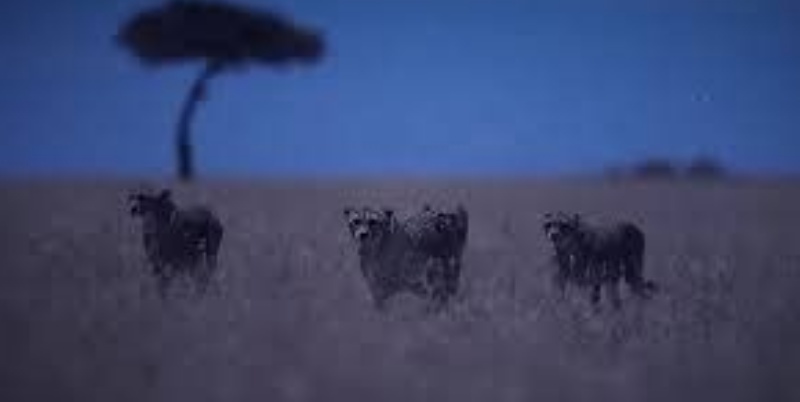Night on Earth - Moonlit Plains (Netflix Documentary)

Summary
Discovery of ultra sensor cameras allow animal and plant activity to be filmed at night, as though it looks day. In this episode, we see how cheetahs and lions catch their prey, such as wildebeest or deer in the African savanna. It then goes onto a desert in Mexico, and how plants such as cacti and other flowers survive. Bats with long tongues suck the pollen out of the flowers due to no birds. Animals in this desert include some rats who eat the hairy lobsters, due to its fur protecting them from venom. It then moves on to seals in the hot Peruvian desert, who are hunted by sea lions and vampire bats at night. It then moves on to the Namibian desert, where white lady huntsman spiders use their incredible skills to map their path in the dark night. Male geckos create a call to impress a female, which goes to the one that beckons her. It also talks about how moles in the desert go into the sand to camouflage themselves and capture small foods, and hide themselves from foods. Finally, animals such as elephants, lions and rhinos all dwell at the lake to drink from the lake, where they don’t want to be distracted.
Impact on me
It made me realise how gifted some animals are at night, and how they use different senses to hunt or to get away from prey. It also amazed me how advanced our technology has become and that we can see things that we have never seen before, stuff that actually happens in the dead of the night in some remote areas of the earth. Overall, I recommend it as there is a whole series of different terrains and weathers etc.
Main message
Overall, the main message was to show that our technology is so advanced that we can see the things we have never seen before, in so much detail and great light, and how much we can infer from each different terrain.
Harry Adby, Year 10
